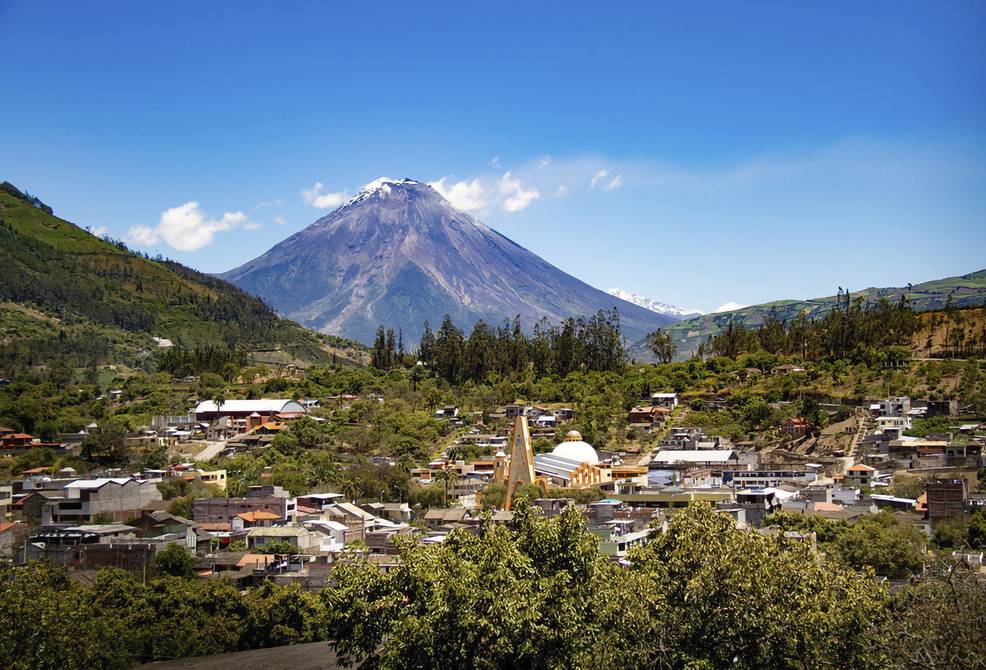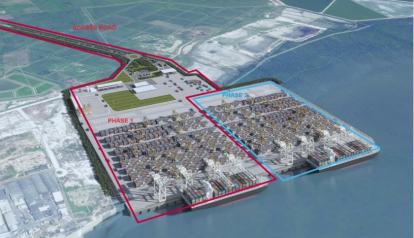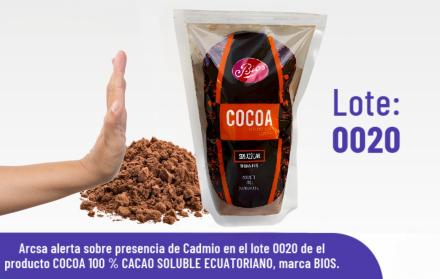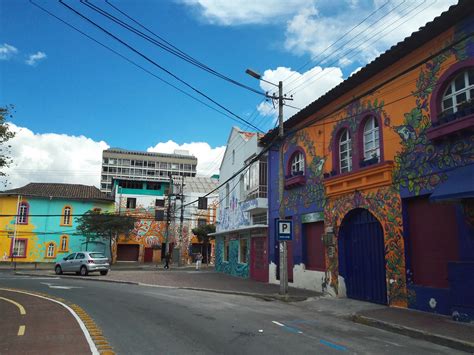To write a post you first need to log in or to sign up as a (free) member.
Magical Towns of the Andean highlands
There are the 13 Magical Towns in the Ecuadorian Highlands. These towns are recognized by the Ministry of Tourism for their cultural, historical, and natural wealth, offering visitors a unique experience. Each town has a population of fewer than 100,000 inhabitants and meets specific criteria set by the Ministry.
Below is a list of the 13 Magical Towns located in the Andean highlands, along with their descriptions as provided by the Ministry of Tourism. The provinces they belong to are indicated in brackets.
Patate (Tungurahua): Known as the Valley of Eternal Spring due to its wonderful climate. The town is rich in cultural syncretism, reflected in its religious devotion to the Lord of the Earthquake.
Alausí (Chimborazo): Called the City of Five Heritage Sites, it features narrow cobblestone streets, Republican-style houses with flower-adorned balconies, and iconic landmarks such as the Devil’s Nose railway, the historic center, the town clock, nearby villages, waterfalls, and stunning landscapes.
Cotacachi (Imbabura): A city of contrasts, where churches, chapels, sculptures, and stained-glass windows blend with lagoons, trails, nature reserves, and productive farmlands. A stroll through its wide streets reveals its rich history and cultural diversity.
San Gabriel (Carchi): A religious tourism destination featuring the stunning La Paz Grotto, home to a giant cave, a suspension bridge, a tunnel, and three thermal pools. The area also boasts natural wonders like the famous Arrayanes Forest, Paluz Waterfall, and El Salado Lagoon.
Guano (Chimborazo): Known as Ecuador’s Handicraft Capital, Guano is renowned for its fine rug weaving. Surrounded by volcanoes and mountains, it offers breathtaking landscapes. A must-visit is the City Museum, which houses the mummy of a Franciscan friar.
San Antonio de Ibarra (Imbabura): A beautiful town famous for its skilled artisans, who have inherited the traditional craft of wood carving.
Rumiñahui (Pichincha): A historic valley rich in heritage, featuring a charming historic center and a main church. Visitors can admire adobe houses with tiled roofs, wooden balconies, and picturesque windows. The town’s spring-like climate and exquisite gastronomy make it a delightful destination.
Azogues (Cañar): Nestled in an inter-Andean valley along the Burgay River, Azogues blends modern and traditional architecture. It boasts 135 historical sites, including the Sanctuary of the Virgin of the Cloud, the Church of the Lord of Flowers, the Cathedral, museums, and cultural centers.
Chordeleg (Azuay): A town known for its colonial churches, adobe houses, and natural attractions like Pungohuayco, the Three Lagoons, Porrión Ecological Park, and the Tasqui Waterfall. Deep-rooted local traditions make it a fascinating destination.
Pimampiro (Imbabura): An ideal spot for family recreation and relaxation in a natural setting, offering Andean bear watching, adventure activities, and cultural experiences. For centuries, Pimampiro has preserved its intercultural identity, fostering harmonious coexistence among mestizos, Afro-descendants, and Indigenous communities who keep their traditions alive.
Calvas (Loja): Blessed with diverse climates, this productive canton boasts a variety of agricultural crops, including corn, vegetables, and high-quality coffee, contributing to a rich and varied gastronomy.
Cayambe (Pichincha): Known as the Land of Waterfalls, Flowers, and Mountains, Cayambe sits at the foot of the snow-capped Cayambe Volcano. It is home to a segment of the Qhapaq Ñan, a UNESCO World Heritage Site. Other highlights include the Middle of the World site, a deer breeding center, the Quitsato Solar Clock, Hacienda Guachalá, the Tingo Waterfalls, and the Guachalá Boulder.
Saraguro (Loja): This region features natural attractions such as Baño del Inka, Washapamba Cloud Forest, the Sleeping Lion, Salado de Turucachi, Putushio Hill, Chinchilla Lagoon, and Arcos Hill, offering a unique blend of history, culture, and breathtaking scenery.
Picture: Patate.

Air Europa will have direct flights to both Quito and Guayaquil this summer
Starting in June, Air Europa will introduce direct routes between its hub at Madrid-Barajas Airport and the airports of Guayaquil and Quito.
Beginning June 24, the airline will operate three weekly flights to each of these cities on a permanent basis. Until then, it will continue to operate its triangular route from Madrid. Air Europa has made more than 78,000 seats available on each of these routes this year—an increase of up to 8% compared to 2024—bringing the total number of seats available to Ecuador to over 157,000. Additionally, thanks to an agreement with Avianca, passengers will have access to domestic connections to Cuenca and Manta, as well as to the islands of Baltra and San Cristóbal in the Galápagos archipelago. Air Europa operates its transatlantic flights with the Boeing 787 Dreamliner.
Italian ambassador on crime in Ecuador: "The mafia business here is enormous"
The Italian ambassador to Ecuador, Giovanni Davoli, isn’t holding back when it comes to discussing the country’s crime problem. He links Ecuador’s growing insecurity to powerful organized crime groups.
Just two days after saying that the murder of an Ecuadorian Air Force lieutenant colonel was mafia-related, Davoli doubled down in a televised interview on February 19, 2025. Speaking on Teleamazonas, he made it clear: "The mafia business in this country is enormous."
He also pointed to an ongoing Italian-led initiative that’s training Ecuadorian justice officials and prosecutors on how to combat money laundering. "We know from experience that the way to hurt the mafia is to attack them where it hurts the most: their money," Davoli said.
Key takeaways from the ambassador’s remarks
"The mafia business here is enormous — equal to about 30% of the country’s GDP. Imagine the amount of money they need to launder."
"In southern Italy, we faced similar violence and clashes between the mafia and the state."
"Italy saw a turning point in the 1980s and 1990s when people started standing up to the mafia."
"Kids need to learn in school what the mafia is and why they should steer clear of it — it’s a huge threat to society."
"Police and prosecutors must be properly trained to understand how these criminal networks operate."
"There’s an Ecuadorian mafia and local groups working with regional and European crime syndicates."
"Most of the cocaine leaving Ecuador ends up in Europe — so who controls it once it gets there?"
Davoli’s comments come just after Ecuadorian President Daniel Noboa revealed that drug trafficking is a $30 billion industry in the country.
Source: Primicias.
Daniel Noboa announces 27% tariff on Mexican imports
On February 3, 2025, President Daniel Noboa of Ecuador declared the imposition of a 27% tariff on products imported from Mexico. This decision comes after Ecuador severed diplomatic ties with Mexico on April 5, 2024. Noboa stated that the tariff would remain in effect until a Free Trade Agreement (FTA) with Mexico is signed.
The primary objective behind this trade measure, according to Noboa, is "to promote our industry and ensure fair treatment for our producers." In a message posted on social media platform X, he emphasized that "the New Ecuador," a slogan of his administration, has always been open to commercial integration, but not when it involves abuse. He also expressed that his government is open to signing an FTA with Mexico, but until that happens, the 27% tariff will be enforced on imports from the North American country.
Under the previous administration of Guillermo Lasso, negotiations for a trade agreement with Mexico were 99% complete. However, in December 2022, both governments decided not to finalize the deal. Julio José Prado, Ecuador’s former Minister of Foreign Trade, explained that the negotiations were stalled due to the decision of Mexican President Andrés Manuel López Obrador, who refused to grant Ecuadorian bananas and shrimp preferential tariff access to Mexico.
Trade exchange between Ecuador and Mexico
Ecuador imports a range of goods from Mexico, including pharmaceuticals, machinery, mechanical devices, cars and their parts, electrical machinery, and cosmetics. These categories make up 57% of Ecuador's non-oil imports from Mexico.
On the other hand, Mexico imports approximately 320 products from Ecuador, sourced from 260 exporting companies, according to the Ecuadorian Federation of Exporters (Fedexpor). As a result, Mexico ranks as the eighteenth-largest destination for Ecuador’s non-oil exports.
Source: Primicias.
Electrical engineers warn of possible blackouts in April due to dry season
Electrical engineers in Ecuador are warning of potential blackouts in April, coinciding with the onset of the dry season. The lack of rainfall during this period could worsen the country’s existing energy deficit, which has not been fully addressed. Marco Acuña from the College of Electrical Engineers of Pichincha explained that while rainfall has helped hydroelectric plants like Coca Codo Sinclair maintain energy production, the dry season will reduce output from these plants. This could lead to an energy shortfall of up to 2,000 megawatts, exacerbating the crisis.
The country has yet to install the promised new thermal energy sources, such as the Progen project, with only 336 megawatts added from the Toachi Pilatón hydroelectric plant and power barges. This capacity is insufficient to meet demand during periods of low water flow, and ongoing maintenance issues could make matters worse.
To address the shortfall, the Advisory Council is recommending repairs to the thermoelectric park, which could add 500 megawatts to the grid. Additionally, Acuña pointed out that the Mazar reservoir, which is being conserved, can only provide energy for 30 days.
Source: EcuaVisa.
Cuenca's real estate sector grew by 18% in 2024
Cuenca's real estate sector has defied economic challenges, growing by 18% in 2024. Henry Astudillo, head of the Cuenca Chamber of Construction, explains the factors behind this growth.
Despite setbacks like power outages, Cuenca’s real estate market remained strong, with both new and ongoing projects thriving. The city’s safety and tourism appeal have made it a hotspot for investment, with private sector players keen on building plazas, shopping centers, cafes, and accommodation.
Land costs and housing demand have sparked a rise in high-rise developments, boosting urban density. Vertical construction has skyrocketed, with land use capacity jumping from 10% in 2023 to 93% in 2024.
Why is Cuenca attractive for real estate investments?
Cuenca’s reputation as one of Ecuador's safest cities has driven tourism and business investment, especially in the Historic Center. Many developers who had previously moved to larger cities have returned, bringing new investments with them.
“Everything comes back to tourism and security. Developers who left for bigger cities are coming back, bringing their money with them." — Henry Astudillo
The sector is growing steadily but still hasn’t reached pre-pandemic levels, with expectations for more growth in the coming years.
What projects are developers focusing on?
Vertical construction is on the rise due to high land costs, with more apartments being built than houses. Previously, 80% of developments were houses, but now apartments and houses are almost split 50-50. This trend reflects a shift towards denser urban living.
Tourism has also driven the growth of plazas and short-term rental options, like Airbnb units near the Historic Center. Meanwhile, Cuenca’s municipality is developing new hospitals and a shopping mall.
Which areas are expanding the most?
The eastern and southwestern parts of Cuenca are seeing the most growth, with key areas like El Ejido, Puertas del Sol, and Avenida Ordóñez Lasso experiencing strong vertical construction.
How are sales performing?
Sales have slowed due to Ecuador’s weak economy. While national numbers are even more challenging, Cuenca has remained stable.
Did power outages affect construction?
Yes, power outages did affect the sector, particularly for small and medium-sized construction companies. The full impact is still being assessed, but it was a tough quarter for the economy.
What challenges do developers face?
To attract investment, the sector needs political stability, legal security, and consistent government support. The government is currently working on 18 public infrastructure projects that require private investment, totaling around USD 8 billion.
Source: Primicias.
31,252 Ecuadorians face deportation from the U.S.
The Ecuadorian community in the U.S. is on edge due to stricter immigration policies under President Donald Trump. Here’s the current situation regarding deportations:
ICE reports that 593 migrants of various nationalities were detained in raids as of January 24, 2024, with Ecuadorians among them. According to Fox News, over 1.4 million undocumented immigrants in the U.S. have final deportation orders, including 31,252 Ecuadorians.
These deportation orders are final, following due legal process, including hearings and appeals. If migrants don’t leave by their given date, they remain undocumented and face permanent federal arrest warrants.
William Murillo, director of 1-800 Migrante, explains that while migrants with ongoing legal cases cannot be detained, those without active cases or who have exhausted appeals face immediate risk. His office has seen a surge in inquiries from Ecuadorians seeking help with asylum, dual nationality, and other legal options.
ICE data also highlights deportation orders for migrants from countries like Mexico, Guatemala, El Salvador, and Venezuela. Murillo notes that deportation flights to Ecuador occur two to three times weekly.
Economic and social impact
There are about 14 million migrants in the U.S., and deporting such a high number would require significant resources. Lawyer Ivonne Téllez from the Catholic University of Quito estimates there are 2.4 million Ecuadorian migrants worldwide, with 800,000 in the U.S. The new anti-immigration law signed by Trump on January 22, 2025, has worsened the situation, restricting asylum requests and increasing deportations.
Téllez warns this could harm the rights of migrants and reduce remittances, which are vital for Ecuador’s economy. She also questions the feasibility of mass deportations, citing the 1.7 million deportations during Trump’s first term as a reference point.
Broader effects
Trump’s policies may deter future migration to the U.S., but many will continue risking their lives, relying on smugglers and dangerous routes like the Darién Gap. Migration patterns may shift, but the drive for a better life remains strong.
The situation highlights the complexities of immigration enforcement, the economic reliance on migrant labor, and the human toll of restrictive policies.
Source: EcuaVisa.
DP World is expanding its port in Posorja
The Posorja Deepwater Port, operated by DP World, is expanding its capacity to handle more containers. With an investment of $170 million, the project is divided into two phases: the first will add 232 meters to the dock, bringing it to 700 meters, and the second will add another 100 meters. This will allow the port to handle two post-Panamax ships simultaneously and move up to 1.5 million containers per year.
Currently, the port is already operating above its capacity, having handled over 955,000 containers in 2023. This growth is partly due to Maersk, one of the world's largest shipping companies, relocating its operations from Guayaquil to Posorja in 2024. The Minister of Transport, Roberto Luque, emphasized that the demand has led DP World to accelerate its expansion plan.
Carlos Merino, CEO of DP World, explained that ports on the west coast of the Americas have struggled to meet the demand from shipping companies. The expansion will not only improve the port's efficiency but also boost Ecuador's competitiveness in the region. Additionally, DP World is developing a 120-hectare free trade zone near the port, which will further strengthen logistics and trade in the area.
The project, which will be completed by 2026, is part of a 50-year concession, after which the infrastructure will be handed over to the state. With these advancements, Posorja is solidifying its position as Ecuador's most important port, ready to tackle the challenges of global trade.
Source: Primicias.

Arcsa Orders Recall of Contaminated Cocoa Batch After Finding Cadmium
A few days ago, Arcsa discovered methanol in an alcoholic beverage, which, like cadmium, can be harmful to health.
The National Agency for Health Regulation, Control, and Surveillance (Arcsa) has issued a new health alert after detecting heavy metal contamination (cadmium) in batch 0020 of the product Cocoa 100% Soluble Ecuadorian Cocoa, manufactured by Fábrica BIOS Cía. Ltda.
In a statement released on the afternoon of January 27, the agency warned that consuming foods with high levels of cadmium can lead to serious health issues, such as severe stomach irritation, vomiting, diarrhea, and long-term damage to vital organs like bones, lungs, and kidneys. This can significantly impact the quality of life for those who consume it.
According to the tests conducted, this batch does not meet the standards set by the International Codex Alimentarius CXS 193-1995, as the cadmium content exceeds the allowed limits. As a result, Arcsa has ordered the immediate removal of batch 0020 from the market and suspended the company’s Good Manufacturing Practices (GMP) certification.
Source: Expreso.

La Mariscal: The Decline of Quito’s Former Nightlife Hub
La Mariscal, once Quito’s vibrant entertainment district, now feels abandoned. The newspaper Primicias visited the area on a quiet Tuesday night and noticed that the streets are nearly empty, with only a few people wandering through. The iconic Plaza Foch, once buzzing with tourists and nightlife, is deserted, with no police presence and only a handful of street promoters hoping to earn small commissions by drawing customers into sparsely attended bars and restaurants.
The businesses that remain open are struggling. Many establishments sit nearly empty, and owners are barely holding on, hoping for a turnaround that feels increasingly unlikely. The surrounding streets paint an even bleaker picture—boarded-up buildings, vacant lots, and signs advertising properties for rent are everywhere. Adding to the area’s challenges are the growing issues of homelessness, informal vendors, and drug activity, all of which contribute to a sense of insecurity.
Despite these struggles, a few places still attract a crowd. One rock bar on Lizardo García Street, for example, draws music enthusiasts who gather to sing along to their favorite bands. However, such energy is the exception rather than the rule, as most visitors remain on edge, constantly looking over their shoulders.
A Struggling Business Landscape
Local business owners describe the situation in La Mariscal as unsustainable. Many have been forced to close their doors due to a lack of customers. Efforts to revive the area through events like fairs and concerts bring temporary relief, but the crowds quickly disappear once the events end. A consistent, long-term plan to address the area's decline remains elusive, leaving business owners frustrated.
Security concerns are a major issue for both businesses and visitors. The absence of a coordinated safety strategy has left business owners to handle problems on their own, often resorting to desperate measures to keep their customers safe. The hospitality sector has also been severely impacted, with hotel occupancy rates plummeting and room prices dropping significantly.
A Delayed Recovery Plan
In 2024, the Quito municipality proposed a recovery plan for La Mariscal, outlining measures to stimulate investment, improve safety, and restore public spaces. However, the plan has been slow to move forward, and meaningful implementation could still be years away. The recovery process is expected to take as long as 12 years, leaving many questioning whether the area can hold on that long.
Key elements of the plan include reducing taxes to attract new businesses, revising zoning laws to encourage development, improving safety through collaboration between the city and police, restoring heritage buildings, and expanding green spaces. While these initiatives hold promise, the slow pace of progress has left many residents and business owners skeptical about the future of La Mariscal.

Narco Escort: Ecuador’s first narco novel
In less than 24 hours, Narco Escort by Andrés Salazar Silva shot to the top of Amazon’s charts in three categories: realistic fiction, fiction, and society. Released on December 17, 2024, it’s being celebrated as Ecuador’s first narco novel.
The gripping story follows Esmeralda, a woman from Ecuador’s coast, as she navigates a world ruled by corruption and organized crime. Salazar Silva, 44, spent five years crafting the 300-page novel, dedicating long hours during the pandemic to bring it to life.
Unexpected Success
To earn the bestseller badge on Amazon, a book must sell 3,500–5,000 copies in one day—a feat Narco Escort achieved effortlessly. A print version will be available in January 2025.
Salazar Silva was stunned by the response.
“I was nervous to check Amazon,” he said. “But when my assistant told me it hit number one in three categories, I couldn’t believe it.”
Why Write a Narco Novel?
Salazar Silva was inspired by the rise of insecurity during the pandemic.
“Mafias were growing nationally and internationally,” he explained. “I wanted to address these issues through fiction.”
Through Esmeralda’s journey, the novel not only explores drug trafficking but also delves into migration, human trafficking, and hope amidst chaos.
From Engineer to Author
An industrial engineer with a master’s in finance, Salazar Silva found refuge in writing during the pandemic, dedicating hours daily to complete his novel. Initially rejected by traditional publishers in Ecuador, he turned to Amazon, a decision that paid off.
What’s Next?
Narco Escort is the first in a planned trilogy, with the next books promising more action and depth. Salazar Silva is also working on a romantic novel, Sunset in Singapore, inspired by his time in Asia.
Source: Primicias.

Ecuador Proposes Flights for Ecuadorians Wanting to Leave the U.S. Voluntarily
The Ecuadorian government is rolling out a new plan aimed at helping undocumented Ecuadorians return home voluntarily from the United States. Foreign Minister Gabriela Sommerfeld shared the proposal, which comes in response to U.S. migration policies under former President Donald Trump that raised concerns over mass deportations.
Stepping Up Support for Ecuadorians Abroad
With fears of increased deportations, Ecuador is bolstering its efforts to assist citizens in the U.S., where it currently operates 12 consulates. Over the past year, the number of cases involving vulnerable Ecuadorians has surged by 150%, reaching over 1,400.
To meet this demand, more consulate staff will be sent to the U.S. "We’re preparing for what’s coming," Sommerfeld told Radio Centro. She also highlighted the government's focus on protecting Ecuadorians from human trafficking networks. "We want to stop this from happening and encourage Ecuadorians to stay in Ecuador," she said.
An Action Plan for Returning Ecuadorians
In response to stricter U.S. migration policies, Ecuador’s Foreign Ministry has developed a plan to support both forced and voluntary returns.
One of the key elements is the voluntary return program, which involves organizing flights for Ecuadorians who wish to return home. These flights, initially focused on those near the southern U.S. border, may expand to reach more Ecuadorians in other regions.
Shifting Focus to Migration Reform and Human Trafficking
Despite efforts led by President Daniel Noboa to push for the regularization of Ecuadorian migrants in the U.S., these initiatives have yet to succeed. Now, the government is shifting its focus to addressing human trafficking and promoting safe, regulated migration pathways.
Source: El Mercurio.
How To Get a Pawn Loan in Ecuador
A pawn loan is a type of secured loan where individuals exchange valuable goods, such as gold jewelry, for immediate cash. Unlike traditional loans that often require extensive paperwork, credit checks, and a strong financial history, pawn loans are more accessible. The growing number of unemployed individuals applying for pawn loans has doubled in 2024.
One of the key institutions offering these types of loans in Ecuador is Biess (Banco del Instituto Ecuatoriano de Seguridad Social). The following outlines how a typical pawn loan process works.
How Does the Pawn Loan Process Work?
Let’s imagine María, a single mother and small business owner, who needs $200 for a medical emergency. She owns a gold chain and decides to go to Biess for a pawn loan. Here’s how the process would unfold:
Evaluation of the Item: María brings her gold chain to a pawn loan office at Biess, where an appraiser assesses the authenticity and weight of the jewelry to determine its value.
Loan Amount Determination: Based on the appraisal, Biess offers María a loan amount that is a percentage of the estimated value. For example, if the chain is valued at $300, she could receive up to $200.
Loan Formalization: María presents her national ID, voting card, and a utility bill. She signs a contract, and the money is either provided in cash or deposited into her account.
Custody of the Collateral: The gold chain is held in custody by Biess for the loan term, which can last up to 180 days. During this period, María can make partial payments or settle the loan in full.
Recovery of the Collateral: Once the debt, plus any interest, is paid, María gets her gold chain back. If she fails to repay the loan, Biess may auction the jewelry. If the auction proceeds exceed the debt, María is entitled to the difference.
Biess is one of the leading institutions offering pawn loans, but private banks and cooperatives also provide similar financial products.olution to meet immediate needs without the usual qualifying hurdles.
LEGO Fun Fest
| From March 1, 2025 to March 31, 2025 | |
| Quicentro | |
| Quito | |
Tickets are available from February 24 on Boletiland Ecuador and in the foodcourt of Quicentro. When you pay with the Deuna app or card from Banco de Pichincha you get a 10% discount. | |
| Tuesday to Saturday: 12:00 PM to 8:00 PM; Sunday: 11:00 AM to 7:00 PM; when purchasing your tickets, you will need to select a time slot for the experience. |
LEGO Fun Fest comes to Quito for the first time with an unmissable interactive exhibition! In 2025, you’ll find a space full of creativity where families and enthusiasts can enjoy a variety of interactive and dynamic activities with LEGO bricks. This festival promises to be the event of the year for all ages, offering a unique opportunity to explore the LEGO universe in exciting ways.

Ecuador's Government to Remove VAT on Pet Food
President Daniel Noboa announced on social media that starting February 1, 2025, pet food will be exempt from VAT.
On Wednesday, January 22, 2025, President and re-election candidate Daniel Noboa shared that Ecuador will eliminate the Value Added Tax (VAT) on pet food.
According to Noboa, this initiative aims to make it easier for more families to care for their pets in the best possible way.
The change will take effect on February 1, 2025.
Pet food sales have been on the rise in Ecuador in recent years. In the first quarter of 2023, sales grew by 25% compared to the same period in 2022, according to market research firm Kantar Worldpanel.
By March 2023, 66% of households had pets, up from 57% just three years earlier, according to Kantar, which tracks real consumption data from 1,706 households in the country.
Source: Primicias.